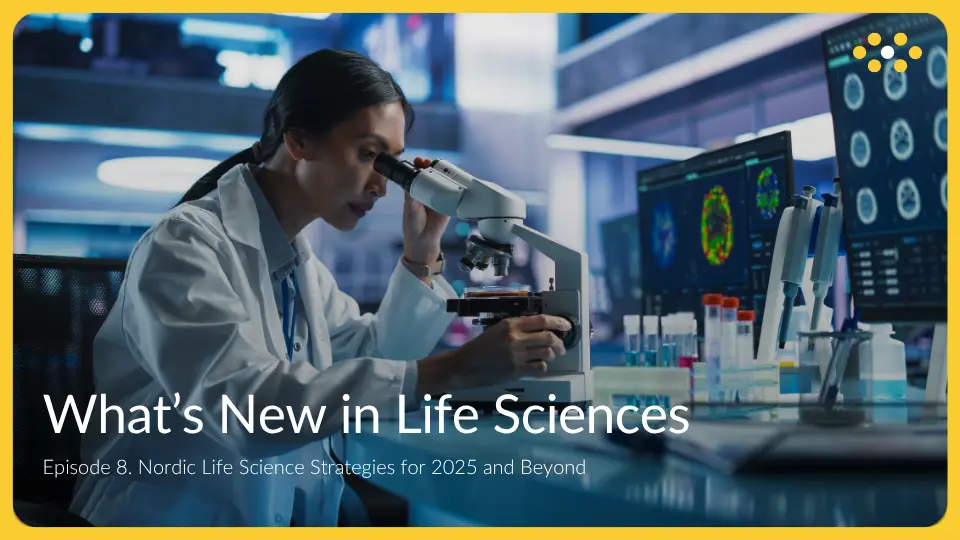Reportedly 89% of STEM businesses struggle to recruit the right people, so we asked Svenja Brandenburg, Director of Talent Acquisition at Sherwin-Williams, for her advice on how to develop and maintain an effective talent strategy for your business.
Svenja provided insights into the importance of continuous training and development, the need to provide a truly inclusive working environment, and the value of developing meaningful external partnerships to enhance your hiring success.
To hear more of Svenja’s expertise, listen to our Progressing Lives Everywhere podcast, hosted by Natasha Crump, ESG Director at Amoria Bond, via Spotify, Apple, or Google, or discover Svenja’s key takeaways below:
How do you provide a positive candidate experience?
When it comes to providing a positive candidate experience, candidates often look for informative job descriptions, straight-forward applications, effective communication, and constructive interview processes. Delivering a brilliant candidate experience can give you the edge over your competitors and could be the determining factor for top talent when they’re deciding not only where to apply, but whose offer to accept. As Svenja said, recruitment itself has redeveloped, but providing an excellent candidate experience remains a priority.
Should I retrain my team, or recruit?
STEM companies must be pro-active in responding to the ever-changing market by recognising and upskilling employees’ current skill sets; this is critical to both your employees and company in remaining relevant and successful. Yet, surprisingly Mercer found that two in five HR leaders acknowledge they do not know what skills they have in their own workforce, which means they are also unaware of their skill gaps.
Your existing employees are your best recruiters. Invest in their progression, and your company will benefit from improved proficiency and increased employee satisfaction, leading to better brand awareness and endorsements. As Svenja articulately put it, “Knowledge is not just power, it is beautiful.”
What are the best recruitment tools and technologies?
With over 98% of fortune 500 companies using recruitment software, there has undoubtedly been a rise in demand for suitable technology. Acknowledging how the industry has embraced technology to aid in recruitment, Svenja praises how progressive tools can improve virtual working whilst proving a valuable instrument in enhancing employer value proposition. Advising on the best tools to use, Svenja recommends, “Whilst many companies only have an ATS system, which is rather outdated in only catering to a ‘post and pray’ strategy, a CRM system is vital in helping you to pipeline effectively. Other excellent technologies include tools for diversity and inclusion, specifically Textio, which helps recruiters reduce bias and write better job descriptions.”
Svenja advises caution as to the extent tools and technologies can really add value; used well, they can complement the recruitment process brilliantly, but ultimately hiring success is down to people, and “all the tools and AI in the world cannot make up for providing good candidate experience.”
How does employer branding help recruitment?
Your employer brand is your company’s reputation as a place to work. Therefore, a positive employer brand can help differentiate you as the employer of choice for STEM professionals, particularly amongst millennials and Gen-Zers who spend an average of 10 hours a day actively online!
A recent LinkedIn report claimed that 75% of candidates research a company before applying for a job opening. Hence, a positive employer brand is essential for you to successfully attract top STEM talent. Recognising HR is ultimately accountable for employer value proposition, Svenja asserts that HR, talent acquisition, and marketing should share the responsibility to successfully drive forward brand messaging. To truly make your employer value proposition stand out, Svenja advises focusing on talent and people. Add substance to your brand through openness and honesty to really communicate your brand to candidates.
How can I improve diversity and inclusion in my business to attract talent?
A passionate diversity and inclusion advocate, Svenja highlights the need for robust and pro-active leadership in driving forward culture changes. To do this, she outlines the importance of embedding a sustainable diversity and inclusion program within your business to attract and retain the best possible talent. Svenja advises, “Education plays a big role in understanding what diversity and inclusion actually means. Business leaders must equip employees with teachable workshops and lessons exploring the importance of diversity and inclusion and why it matters.”
Inclusive recruitment helps create larger talent pools with a wider skill base, increasing applicant and organisational diversity and improving operating innovation, productivity, and profitability. Authenticity is essential, and an inclusive hiring process is not enough by itself, as Svenja reflects: To be truly diverse, companies must embrace both a sustainable mindset and inclusive company policies.
How do I work with external recruitment partners?
A former recruiter herself, Svenja, believes that open communication is the key ingredient to a successful partnership between internal recruitment teams and external agencies. Highlighting the importance of establishing a genuine relationship, Svenja asserts that recruiters are not order takers; they should be business partners and understand the wider scope of the business. An extension of your team, it is crucial that external recruiters have full and direct access to hiring managers to fully comprehend briefs, grasp company culture, and understand role requirements. Reflecting on the changing recruitment landscape, she adds, “TA used to be a true support function sitting somewhere in HR … in my opinion, it [now] needs to be a true business partnering function, thinking far more ahead with far more focus on strategic recruitment, rather than the proverbial ‘bottom on a seat.’”
If you’re ready to put Svenja’s advice into action and get the best talent for your business, contact us today and find out how we can help you develop your talent attraction strategy, create a compelling EVP, and source and secure you the best STEM talent for your business!






